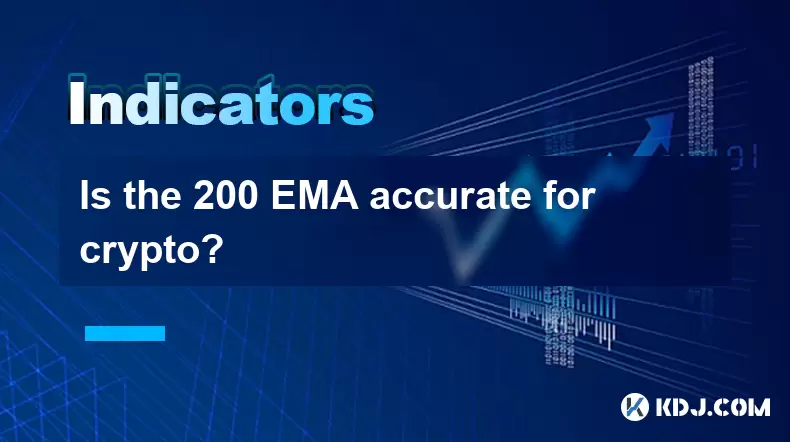-
 Bitcoin
Bitcoin $117,462.8204
-2.03% -
 Ethereum
Ethereum $3,061.1595
1.10% -
 XRP
XRP $2.9139
-2.19% -
 Tether USDt
Tether USDt $1.0002
0.02% -
 BNB
BNB $685.1357
-1.24% -
 Solana
Solana $161.3803
-2.11% -
 USDC
USDC $1.0002
0.04% -
 Dogecoin
Dogecoin $0.1948
-2.92% -
 TRON
TRON $0.2987
-0.89% -
 Cardano
Cardano $0.7330
-1.27% -
 Hyperliquid
Hyperliquid $47.7888
0.13% -
 Stellar
Stellar $0.4514
-2.93% -
 Sui
Sui $4.0169
2.74% -
 Chainlink
Chainlink $15.7088
-2.57% -
 Hedera
Hedera $0.2356
-3.33% -
 Bitcoin Cash
Bitcoin Cash $488.6656
-3.61% -
 Avalanche
Avalanche $21.2955
-1.47% -
 UNUS SED LEO
UNUS SED LEO $9.0415
0.42% -
 Shiba Inu
Shiba Inu $0.0...01332
-0.82% -
 Toncoin
Toncoin $3.0124
-0.62% -
 Litecoin
Litecoin $94.2175
-2.07% -
 Polkadot
Polkadot $4.0011
-0.61% -
 Monero
Monero $333.5714
-3.46% -
 Uniswap
Uniswap $9.1114
-1.56% -
 Dai
Dai $1.0000
0.02% -
 Ethena USDe
Ethena USDe $1.0005
0.00% -
 Bitget Token
Bitget Token $4.4951
1.87% -
 Pepe
Pepe $0.0...01242
0.47% -
 Aave
Aave $321.9943
0.51% -
 Bittensor
Bittensor $434.1984
5.13%
Is the 200 EMA accurate for crypto?
The 200 EMA is a key tool in crypto trading, helping identify long-term trends by smoothing price volatility and signaling potential support or resistance levels.
Jul 11, 2025 at 08:57 am

Understanding the 200 EMA in Cryptocurrency Trading
The 200-day Exponential Moving Average (EMA) is a widely used technical indicator across financial markets, including cryptocurrency. It helps traders identify long-term trends by smoothing out price volatility over a 200-day period. In crypto trading, where market swings are more pronounced than traditional assets, many investors rely on the 200 EMA to gauge potential support or resistance levels.
While it's not foolproof, the 200 EMA has shown historical relevance during major bull and bear cycles in the crypto space. For example, Bitcoin's price often reacts significantly when approaching or crossing this moving average line on weekly charts.
How the 200 EMA Works in Crypto Charts
To apply the 200 EMA effectively, traders need to understand how it differs from other moving averages like the Simple Moving Average (SMA). Unlike the SMA, which assigns equal weight to all data points, the EMA gives more weight to recent prices, making it more responsive to new information.
Here’s how to set up the 200 EMA on popular charting platforms:
- Open your preferred platform (e.g., TradingView).
- Add a new indicator.
- Search for "Exponential Moving Average."
- Set the length parameter to 200.
- Apply it to the chart.
Once plotted, you’ll notice that the 200 EMA often acts as a dynamic support or resistance level, especially during retracements in strong uptrends or rallies in downtrends.
Historical Performance of the 200 EMA in Crypto Markets
Looking back at Bitcoin’s price history reveals several instances where the 200 EMA played a pivotal role:
- During the 2018–2019 bear market, Bitcoin found key support near its 200 EMA before launching into the next bull cycle.
- In late 2022, Ethereum briefly touched its 200 EMA before resuming a downward trend, indicating weak long-term sentiment at that time.
- Altcoins like Solana and Cardano have also seen price reactions around their 200 EMA, though with less consistency compared to larger-cap assets.
It’s important to note that while the 200 EMA can offer guidance, it should not be used in isolation. Combining it with volume analysis, RSI, or MACD can improve decision-making accuracy.
Limitations and Risks of Using the 200 EMA in Crypto
Despite its popularity, the 200 EMA has limitations in the highly volatile crypto market:
- Lagging nature: As a moving average, the 200 EMA inherently lags behind current price action. By the time the price reaches the EMA, the trend may already be reversing.
- Whipsaw effects: Sudden price spikes or crashes can cause false signals, especially in low-cap altcoins.
- Market manipulation: Large players can move prices to trigger stop losses or create fake breakouts near the 200 EMA.
Therefore, relying solely on the 200 EMA without additional filters can lead to poor trade execution and missed opportunities.
Combining the 200 EMA with Other Indicators
To enhance reliability, many traders combine the 200 EMA with complementary tools:
- Volume indicators: High volume near the 200 EMA can confirm whether a bounce or breakdown is credible.
- RSI (Relative Strength Index): Helps determine if the asset is overbought or oversold near the 200 EMA, increasing confidence in reversal scenarios.
- MACD (Moving Average Convergence Divergence): Useful for identifying momentum shifts around the 200 EMA.
Some traders also use multiple EMAs (like 50 and 200) together to spot crossovers, known as the “Golden Cross” or “Death Cross,” which are often cited in crypto news cycles.
Practical Use Cases for the 200 EMA in Crypto Trading Strategies
Many institutional and retail traders incorporate the 200 EMA into their strategies:
- Trend following: If the price stays consistently above the 200 EMA, it's considered bullish; below it, bearish.
- Mean reversion: Traders look to buy dips near the 200 EMA in strong uptrends or sell rallies near it in downtrends.
- Breakout confirmation: A breakout above the 200 EMA after a prolonged consolidation can signal the start of a new trend.
Each strategy requires proper risk management, such as setting stop-loss orders and position sizing based on account size and volatility.
Frequently Asked Questions
Q: Can I use the 200 EMA for short-term crypto trading?
A: While the 200 EMA is primarily a long-term indicator, some traders use it on lower timeframes (e.g., 4-hour or daily charts). However, due to its lagging nature, it may generate misleading signals in fast-moving markets.
Q: Is the 200 EMA more reliable for Bitcoin than altcoins?
A: Generally yes. The 200 EMA tends to work better with high-market-cap cryptocurrencies like Bitcoin and Ethereum, where liquidity and participation are higher. Altcoins often lack sufficient volume and stability for the 200 EMA to be as effective.
Q: Should I always trust price bounces off the 200 EMA?
A: No. Price reactions near the 200 EMA should be confirmed with other technical tools like volume, candlestick patterns, or momentum oscillators. Blindly trusting every bounce can lead to significant losses.
Q: How often does the 200 EMA fail in crypto markets?
A: Failures are common during periods of extreme volatility or macroeconomic uncertainty. It’s essential to assess broader market conditions and avoid treating the 200 EMA as an absolute rule.
Disclaimer:info@kdj.com
The information provided is not trading advice. kdj.com does not assume any responsibility for any investments made based on the information provided in this article. Cryptocurrencies are highly volatile and it is highly recommended that you invest with caution after thorough research!
If you believe that the content used on this website infringes your copyright, please contact us immediately (info@kdj.com) and we will delete it promptly.
- GameStop, Bitcoin, and the Inflation Hedge: A New York Perspective
- 2025-07-16 08:30:12
- Solana Memecoins Hit the Big Time: PUMP and Sonic Get Coinbase Listing Boost!
- 2025-07-16 06:50:12
- Core Foundation's Rev+: Fueling Ecosystem Growth Through Revenue Sharing
- 2025-07-16 06:30:17
- Ripple, California, and Collaboration: A New Era for Crypto?
- 2025-07-16 06:30:17
- Uniswap, Mary-Catherine Lader, and the DeFi Evolution: What's Next?
- 2025-07-16 07:10:12
- Roman Storm, DPRK Hackers, and Prosecutors: A Tangled Web
- 2025-07-16 06:50:12
Related knowledge

Advanced RSI strategies for crypto
Jul 13,2025 at 11:01am
Understanding the Basics of RSI in Cryptocurrency TradingThe Relative Strength Index (RSI) is a momentum oscillator used to measure the speed and chan...

Crypto RSI for day trading
Jul 12,2025 at 11:14am
Understanding RSI in the Context of Cryptocurrency TradingThe Relative Strength Index (RSI) is a momentum oscillator used to measure the speed and cha...

Crypto RSI for scalping
Jul 12,2025 at 11:00pm
Understanding RSI in the Context of Crypto TradingThe Relative Strength Index (RSI) is a momentum oscillator widely used by traders to measure the spe...

What does an RSI of 30 mean in crypto
Jul 15,2025 at 07:07pm
Understanding RSI in Cryptocurrency TradingRelative Strength Index (RSI) is a momentum oscillator widely used in cryptocurrency trading to measure the...

What does an RSI of 70 mean in crypto
Jul 13,2025 at 06:07pm
Understanding the RSI Indicator in Cryptocurrency TradingThe Relative Strength Index (RSI) is a widely used technical analysis tool that helps traders...

How to avoid RSI false signals in crypto
Jul 13,2025 at 06:21pm
Understanding RSI and Its Role in Crypto TradingThe Relative Strength Index (RSI) is a momentum oscillator used to measure the speed and change of pri...

Advanced RSI strategies for crypto
Jul 13,2025 at 11:01am
Understanding the Basics of RSI in Cryptocurrency TradingThe Relative Strength Index (RSI) is a momentum oscillator used to measure the speed and chan...

Crypto RSI for day trading
Jul 12,2025 at 11:14am
Understanding RSI in the Context of Cryptocurrency TradingThe Relative Strength Index (RSI) is a momentum oscillator used to measure the speed and cha...

Crypto RSI for scalping
Jul 12,2025 at 11:00pm
Understanding RSI in the Context of Crypto TradingThe Relative Strength Index (RSI) is a momentum oscillator widely used by traders to measure the spe...

What does an RSI of 30 mean in crypto
Jul 15,2025 at 07:07pm
Understanding RSI in Cryptocurrency TradingRelative Strength Index (RSI) is a momentum oscillator widely used in cryptocurrency trading to measure the...

What does an RSI of 70 mean in crypto
Jul 13,2025 at 06:07pm
Understanding the RSI Indicator in Cryptocurrency TradingThe Relative Strength Index (RSI) is a widely used technical analysis tool that helps traders...

How to avoid RSI false signals in crypto
Jul 13,2025 at 06:21pm
Understanding RSI and Its Role in Crypto TradingThe Relative Strength Index (RSI) is a momentum oscillator used to measure the speed and change of pri...
See all articles

























































































